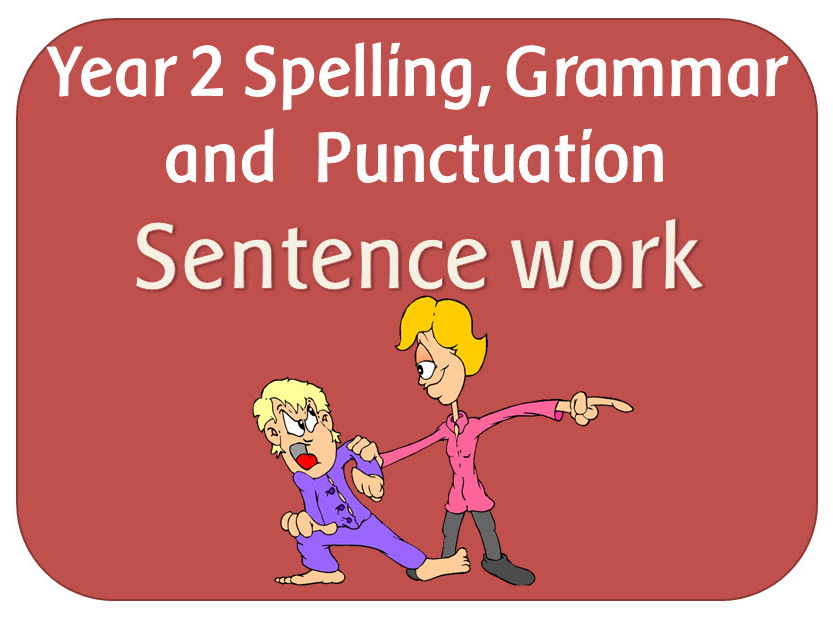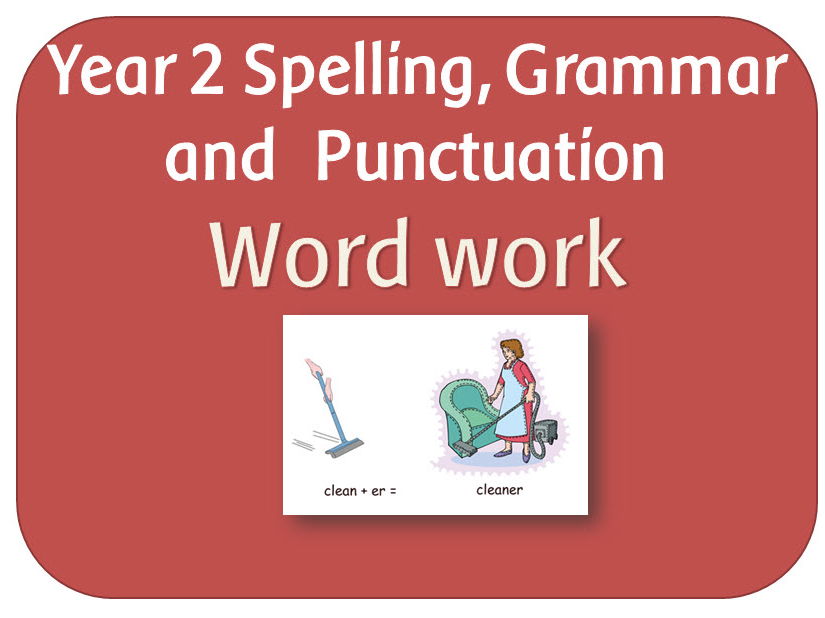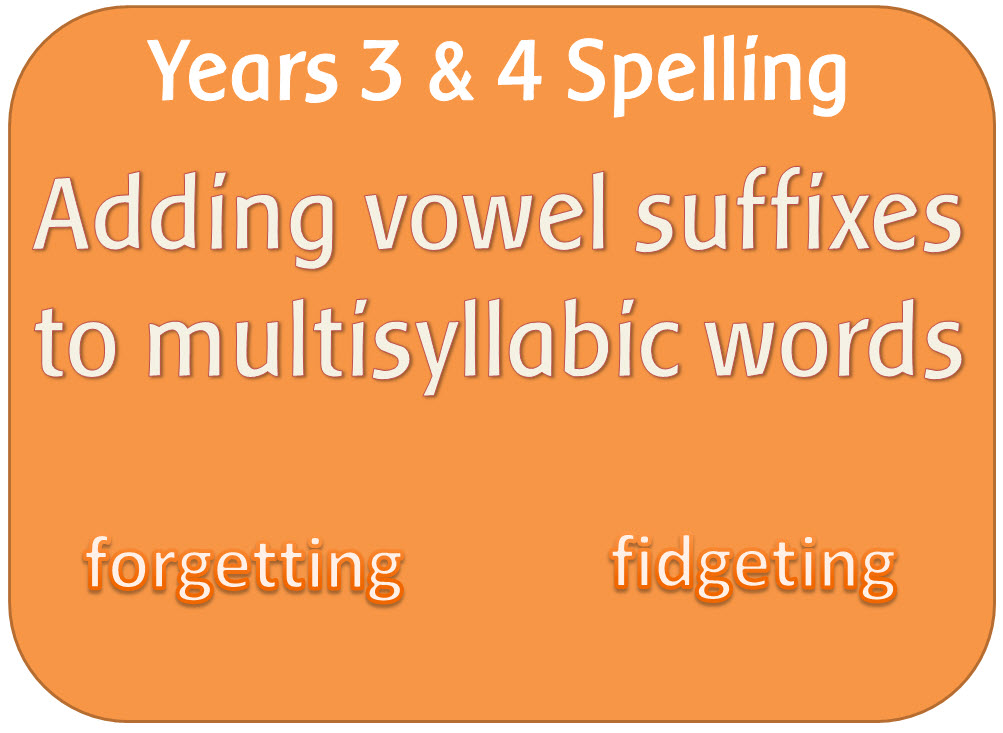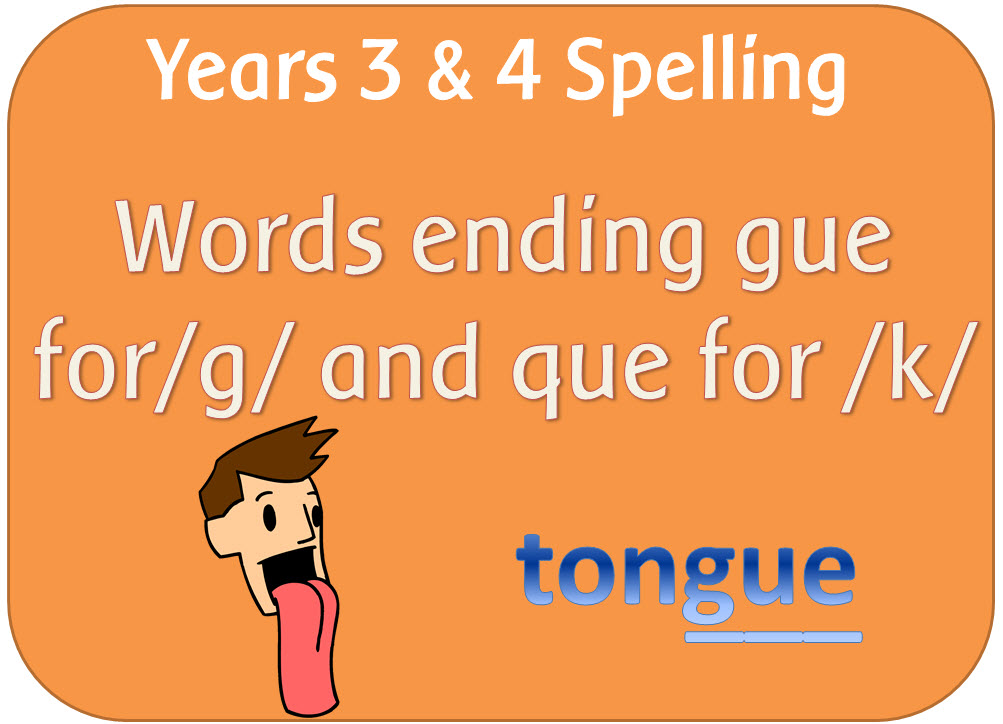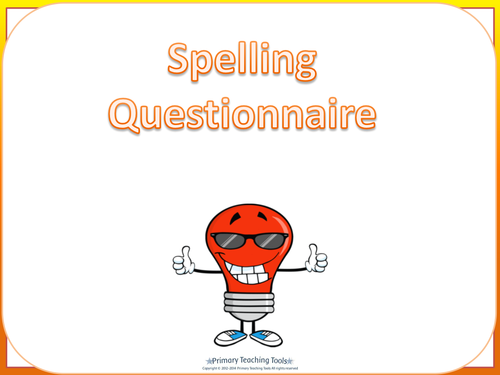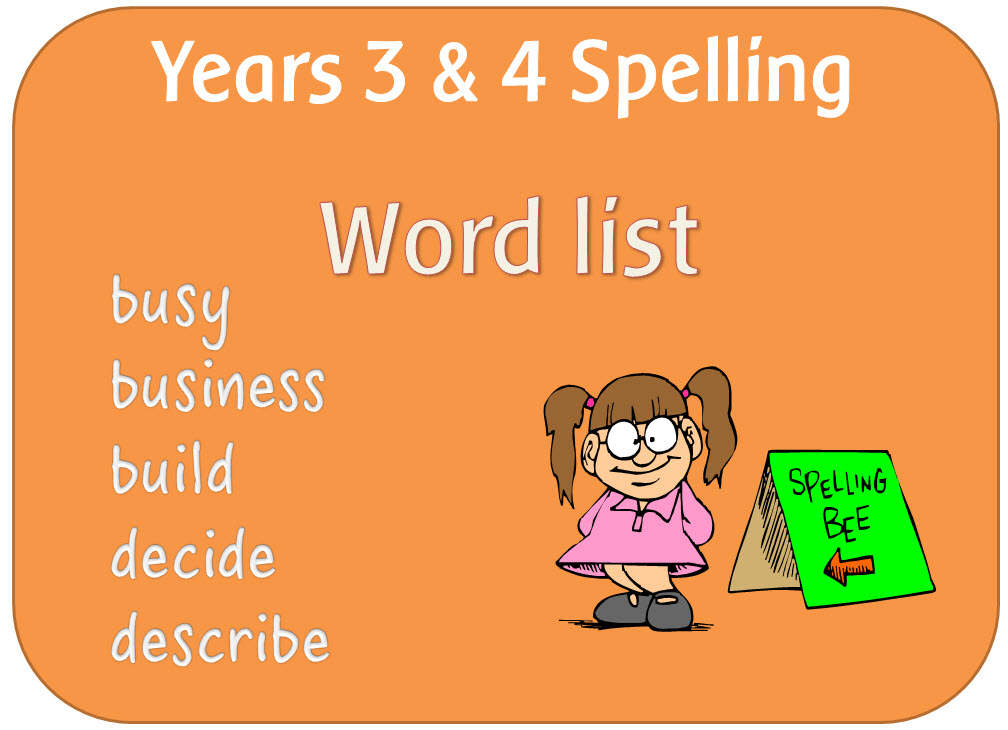
404Uploads
1066k+Views
681k+Downloads
English language arts

SPaG Year 1 Grammar: Suffixes
3 powerpoint lessons looking at suffixes that can be added to verbs without any change in spelling of the root word, plus a jigsaw activity and plan.
This set contains the following PowerPoints:
The suffix ed: Explains what a suffix is, and what meaning the suffix ed adds to verbs, giving examples and an activity
The suffix er: Explains what a suffix is, and what meaning the suffix er adds to nouns, giving examples and an activity
The suffix ing: Explains what a suffix is, and what meaning the suffix ing adds to verbs, giving examples and an activity
Activity cards (pdf)
Jigsaw cards - root words and suffixes er ing ed

SPaG Year 1: The prefix un
2 powerpoint lessons - how the prefix un- changes the meaning of verbs and adjectives; plus jigsaw cards and a lesson plan.
Adding the prefix un to adjectives: Powerpoint explaining how the meaning of adjectives change when un- is added, ending with an activity
Adding the prefix un to verbs: Powerpoint explaining how the meaning of verbs changewhen un- is added, ending with an activity
Activity cards
Jigsaw cards - root words and the prefix un.

SPaG Year 2 Spelling: the /n/ sound spelt kn and gn
A set of resources looking at the /n/ sound spelt kn and gn at the beginning of words.
POWERPOINT: Explains the spelling and gives a short explanation of why these types of word exist, then gives examples for the children to read. Then there is a spelling activity, using a look, hide and check format
BINGO: Two sets, kn words and kn and gn words
CARDS: Matching cards with words and pictures
WORDSEARCH: kn words
WORD DOCUMENTS: Lists of words and a planning document.

SPaG Year 2 Spelling: The /ʌ/ sound spelt o
A powerpoint lesson looking at words such as other, mother, brother or nothing. The pack also includes a word list, wordsearch, word cards and outline planning.

SPaG Year 2 Spelling: The /ɔ:/ sound spelt a before l and ll
A set of resources to teach children that the /ɔ:/ sound (‘or’) is usually spelt as a before l and ll.

SPaG Year 2 Spelling: The /i:/ sound spelt –ey
A powerpoint lesson looking at words such as key, monkey, donkey etc. The pack also includes a word list, wordsearch, crossword and outline planning.

SPaG Year 2 Sentences: Statements, questions, exclamations or commands
A lesson explainint the difference between statements questions exclamations and commands, with 2 activities.
DIFFERENT TYPES OF SENTENCES
POWERPOINT
Explains the difference between a statement, question, exclamation and a command, and how the grammatical patterns vary
ACTIVITIES
Different types of sentences - writing an advertisement x 2

SPaG Year 2 Word: Formation of nouns using suffixes such as -ness and -er and by compounding
The pack recaps what suffixes are and explains how to form nouns using the suffixes -er and -ment and by compounding. Also included is a list of compound words and 2 sets of jigsaw cards.
INTRODUCTORY POWERPOINT
What are suffixes: Explains what they are and what meaning they add to words
FORMATION OF NOUNS USING SUFFIXES: er, ment, ness
POWERPOINTS: The three resources below recap on what a suffix and a noun is, then explain what each suffix means, and what effect it has on words. They ask the children to add the suffix to words and explain how the meaning has changed.
Formation of nouns using the suffix er
Formation of nouns using the suffix ment
Formation of nouns using the suffix ness
ACTIVITIES
Jigsaw cards er ness and ment - to make words
FORMATION OF NOUNS BY COMPOUNDING:
POWERPOINT
Formation of nouns by compounding: Explains what compound nouns are, then gives lists of words to make new compound nouns.
ACTIVITIES
Creating compound words: For the children to make words
Compound word list

SPaG Year 2 Word: Formation of adjectives using suffixes such as -ful or -less
6 powerpoints looking at adding different suffixes to make adjectives, plus a worksheet:
POWERPOINTS: The first three resources below explain what adjectives are, and what each suffix does to the meaning of words it is added to. They end with a list of words to add the suffix to, and explain how the meaning of the word has changed.
Formation of adjectives by adding ful
Formation of adjectives by adding less
Formation of adjectives by adding y
Formation of adjectives ful and less recap: Goes over the two suffixes then ends with an activity to change words by adding ful or less
Adding suffixes to words in sentences: Pictures to encourage the children to make adjectives from root words.
Think of adjectives: Different pictures for the children to look at and think of describing words using the suffixes ful y and less.
ACTIVITIES
Formation of adjectives worksheet: Writing sentences to describe pictures

SPaG Year 2 : Sentence punctuation and commas for lists
2 powerpoint lessons explaining the use of capital letters, full stops, question marks and exclamation marks to demarcate sentences and the use of commas to separate items in a list.

SPaG Year 3 & 4 Spelling: The /ʌ/ sound spelt ou
Resources to teach the spelling guidelines for the /ʌ/ sound spelt ou
POWERPOINTS
U spelt ou: Talks about how the /u/ sound can be spelt ou, and gives examples of words containing the grapheme. It ends with a spelling activity.
PDF (PRINTABLE) RESOURCES
Look Write Cover Check: For spelling practice
u spelt ou word cards
TEACHER RESOURCES
Word list
Adaptable outline plan

SPaG Year 3 & 4 Spelling: The suffix -ly
Resources to teach the spelling guidelines for adding the suffix ly
POWERPOINTS
The Suffix -ly: Recaps what an adjective and adverb are, and explains how the suffix -ly can be added to an adjective to form an adverb. It explains the rules for adding the suffix, and also the exceptions.(If the root wrod ends in y with a consonant letter before it, the y is change to i, but only if the root word has more than one syllable. / If the root word ends with le, the le is changed to ly. / If the root word ends with ic, then ally is added except in the word publicly.
PDF (PRINTABLE) RESOURCES
Look Write Cover Check: For spelling practice
Word cards containing the suffix ly
Adverbs ending ly worksheet
TEACHER RESOURCES
Word list
Adaptable outline plan

SPaG Year 3 & 4 Spelling: The suffix -ation
Resources to teach the spelling guidelines for adding the suffix ation to verbs to form nouns.
POWERPOINTS
The suffix ation: Recaps the definition of a noun and a verb and the rules for adding suffixes beginning with a vowel letter. It then demonstrates the addition of ation to certain words and ends with an activity for the children to complete.
ation sentences: A series of sentences for children to create and insert the correct noun by adding ation to verbs.
PDF (PRINTABLE) RESOURCES
Look Write Cover Check: For spelling practice
The suffix ation worksheet
TEACHER RESOURCES
Word list
Adaptable outline plan

SPaG Year 2 Spelling: Adding the endings ing, ed, er, est and y to words ending in consonant / -e
Resources to teach the spelling rules for: Adding –ed, –ing, –er and –est to a root word ending in –e with a consonant before it
POWERPOINTS
Adding suffixes to words ending in e: Explains what a root word and a suffix is, and shows the addition of -ed and -ing, explaining the spelling rule. It ends with an activity to add ing or ed and er, est or y to different root words.
Quick write - Adding ed to verbs ending in e
Quick write - Adding ing to verbs ending in e
Quick write - Adding er to words ending in e
Quick write - Adding est to words ending in e
Quick write - Adding y to words ending in e
Quick write activities show firstly the the root word, then how it changes/stays the same when the suffixes are added.
ACTIVITIES
Words ending in a consonant then e matrix: to fill in
TEACHER RESOURCES
Y2 Spelling Appendix: Adding suffixes to words ending in e: An adaptable outline plan
Word List - With relevant words ending in e with a consonant before it

SPaG Year 3 & 4 Spelling: Adding suffixes beginning with vowels to words of more than one syllable
A lesson explaining the rules of how to add vowel suffixes to words of more than one syllable, plus activities and a word list.

SPaG Year 3 & 4 Spelling: Words with endings sounding like /ʒə/ or /tʃə/ (-sure & -ture)
Resources to teach the spelling guidelines for spelling words with endings sounding like /ʒə/ or /tʃə/
POWERPOINTS
Words ending sure: Explains the word ending 'zh-er' and gives examples of common words ending in sure. It ends with a spelling activity.
Words ending sure: Explains the word ending 'ch-er', giving examples of words ending in ture. It also explains that some words might sound like they end ture, but to check whethere they are words with the -er suffix such as teacher or richer. It ends with a spelling activity.
PDF (PRINTABLE) RESOURCES
Look Write Cover Check: For spelling practice
sure word cards
ture word cards
sure wordsearch
ture wordsearch
Although every effort has been made to check wordsearches for unintentional inappropriate words, it is recommended that teachers double check them before giving to children.
TEACHER RESOURCES
Word list
Adaptable outline plan

SPaG Year 3 & 4 Spelling: Words with the /ʃ/ sound spelt ch
POWERPOINT: Explains that these type of words come from the French language. It gives examples of the most common words with this grapheme then ends with a writing activity.
PDF (PRINTABLE) RESOURCES:
Look Write Cover Check: For spelling practice
Ch for the sh sound worksheet
Ch for the sh sound picture worksheet
Wordsearch
TEACHER RESOURCES:
Word list
Adaptable outline plan

SPaG Year 3 & 4 Spelling: words ending with the /g/ sound spelt gue and the /k/ sound spelt que
POWERPOINTS:
gue at the end of words
que at the end of words
PDF (PRINTABLE) RESOURCES:
Look Write Cover Check x 2: For spelling practice
Cards with words ending gue
gue for the g sound worksheet
Cards with words ending que
que for the k sound worksheet
que for the k sound picture worksheet
que and gue wordsearch
TEACHER RESOURCES:
Word list
Adaptable outline plan

KS2 Spelling activity sheets
A variety of pdf sheets that can be used for different spelling activities. They include:
Acrostic poems
Bubble words
Colourful words
Cut out words
Look write cover check spelling sheet
Rainbow spellings
Shape words
Silly Sentences
Spelling with both hands
Stories with spellings
Word search with spellings
Words in words
Writing a poem
Writing fun

SPaG Year 3 & 4 Spelling: Word lists
Resources to teach the spellings of the words in the years 3 and 4 word list
INTRODUCTORY POWERPOINT: Spelling strategies: Looks at different ways to learn spellings for children to use
16 SPELLING POWERPOINTS:
The words are organised into 15 different categories according to how they are spelt. Each category contains between 6 and 9 words so that they can also be used for spelling tests.
Each category contains a PowerPoint with a page for each word and a range of strategies to help remember the spelling of each. The strategies include:
Looking at the history of the word
Looking at words in the same word family
Looking at spelling rules
Looking at root words and affixes
Using speak and spell
Highlighting unusual spelling
Mnemonics
Looking at words within the word
Looking at words with similar spelling patterns
The categories are as follows:
Spelling words using phonic knowledge
Words with schwa digraph 1
Words with schwa digraph 2
Words with schwa spelt a
Words with schwa spelt e and i
Words with schwa spelt o and u
Silent letters 1
Silent letters 2
Words with the grapheme ea
Words with the grapheme gh
Words with the letter string ough
Words with the phonemes tch and sh
Words with unusual correspondences 1
Words with unusual correspondences 2
Words with unusual correspondences 3
Words with unusual correspondences 4







